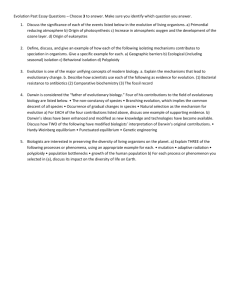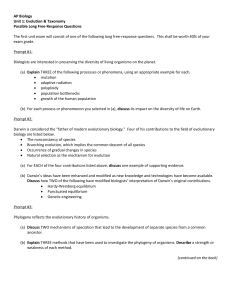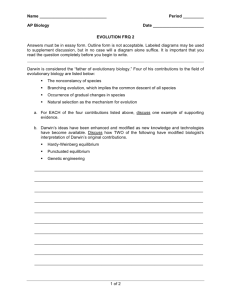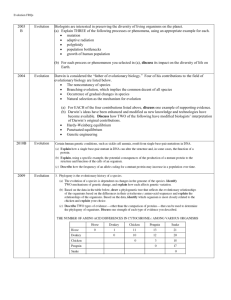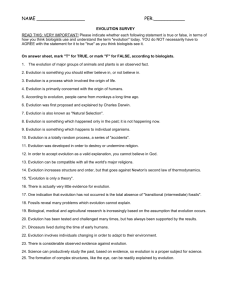Task: Evidence for evolution
advertisement
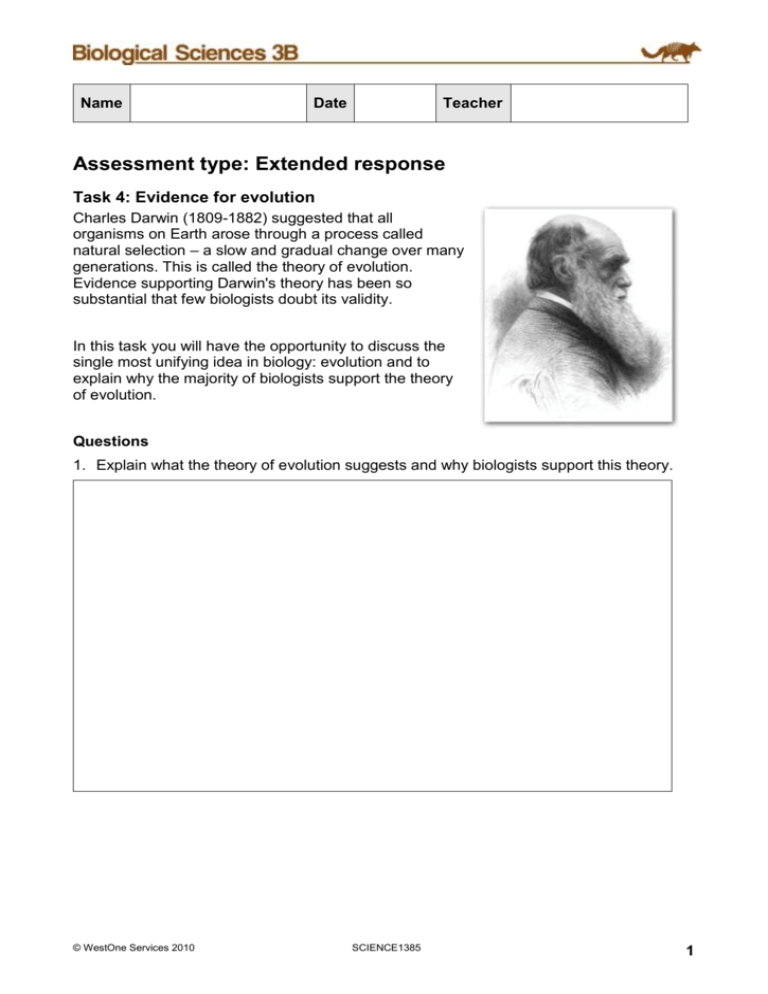
Name Date Teacher Assessment type: Extended response Task 4: Evidence for evolution Charles Darwin (1809-1882) suggested that all organisms on Earth arose through a process called natural selection – a slow and gradual change over many generations. This is called the theory of evolution. Evidence supporting Darwin's theory has been so substantial that few biologists doubt its validity. In this task you will have the opportunity to discuss the single most unifying idea in biology: evolution and to explain why the majority of biologists support the theory of evolution. Questions 1. Explain what the theory of evolution suggests and why biologists support this theory. © WestOne Services 2010 SCIENCE1385 1 2. Choose three of the following areas of biology: fossils homologous structures comparative anatomy embryology of vertebrates comparative biochemistry and genetics. Discuss the evidence for evolution from each of the three areas you chose. Support your answers, where possible, with specific examples other than those given in this resource. © WestOne Services 2010 SCIENCE1385 2 3. a) Describe or draw a phylogenetic tree that illustrates evolutionary relationships between one of the groups of organisms listed below. Dogs (wild and domestic): do not include separate breeds of the domestic dog). Darwin’s finches b) Explain the type(s) of evolutionary evidence used to construct your phylogenetic tree. © WestOne Services 2010 SCIENCE1385 3

